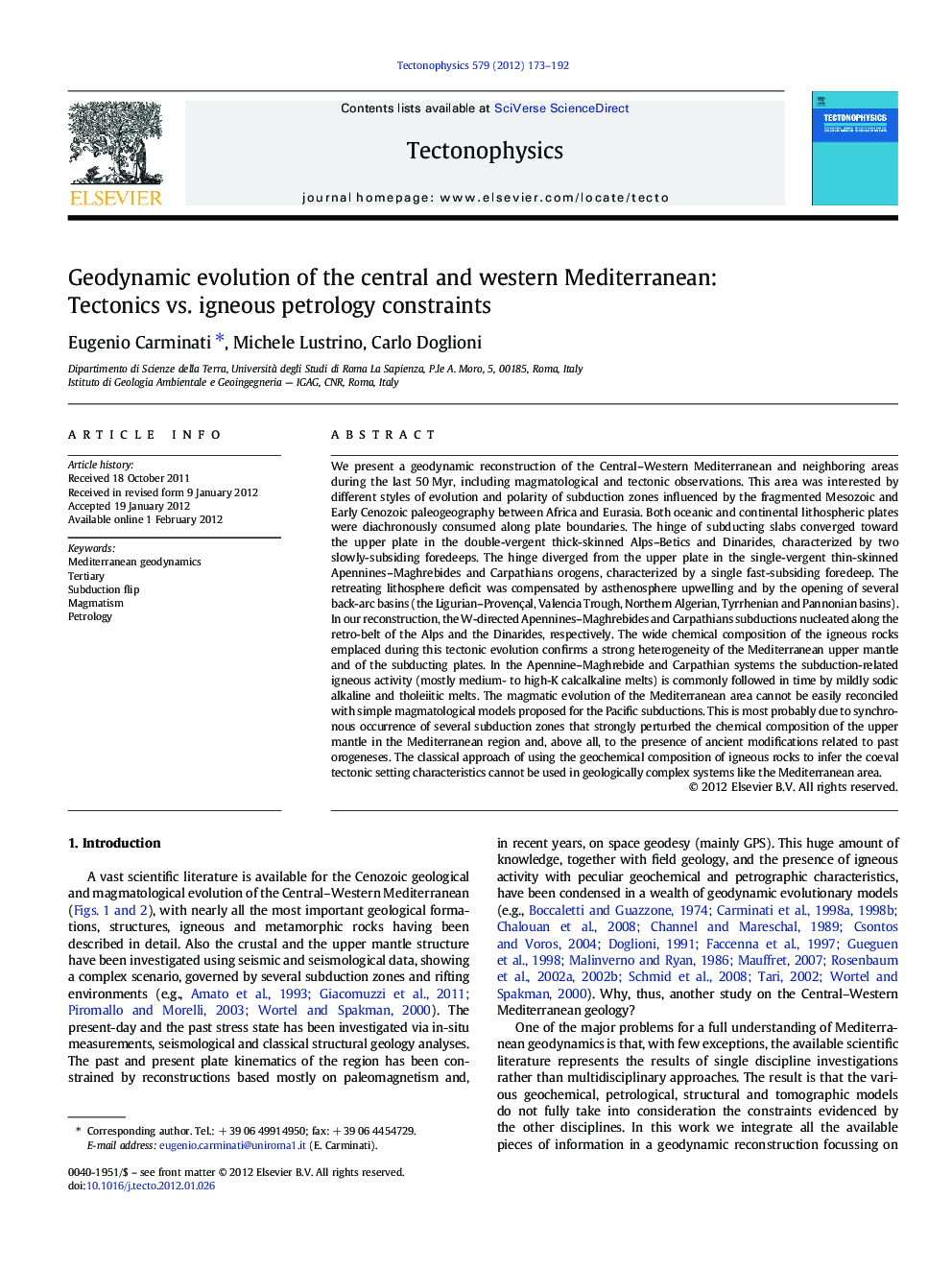| Article ID | Journal | Published Year | Pages | File Type |
|---|---|---|---|---|
| 4692621 | Tectonophysics | 2012 | 20 Pages |
We present a geodynamic reconstruction of the Central–Western Mediterranean and neighboring areas during the last 50 Myr, including magmatological and tectonic observations. This area was interested by different styles of evolution and polarity of subduction zones influenced by the fragmented Mesozoic and Early Cenozoic paleogeography between Africa and Eurasia. Both oceanic and continental lithospheric plates were diachronously consumed along plate boundaries. The hinge of subducting slabs converged toward the upper plate in the double-vergent thick-skinned Alps–Betics and Dinarides, characterized by two slowly-subsiding foredeeps. The hinge diverged from the upper plate in the single-vergent thin-skinned Apennines–Maghrebides and Carpathians orogens, characterized by a single fast-subsiding foredeep. The retreating lithosphere deficit was compensated by asthenosphere upwelling and by the opening of several back-arc basins (the Ligurian–Provençal, Valencia Trough, Northern Algerian, Tyrrhenian and Pannonian basins). In our reconstruction, the W-directed Apennines–Maghrebides and Carpathians subductions nucleated along the retro-belt of the Alps and the Dinarides, respectively. The wide chemical composition of the igneous rocks emplaced during this tectonic evolution confirms a strong heterogeneity of the Mediterranean upper mantle and of the subducting plates. In the Apennine–Maghrebide and Carpathian systems the subduction-related igneous activity (mostly medium- to high-K calcalkaline melts) is commonly followed in time by mildly sodic alkaline and tholeiitic melts. The magmatic evolution of the Mediterranean area cannot be easily reconciled with simple magmatological models proposed for the Pacific subductions. This is most probably due to synchronous occurrence of several subduction zones that strongly perturbed the chemical composition of the upper mantle in the Mediterranean region and, above all, to the presence of ancient modifications related to past orogeneses. The classical approach of using the geochemical composition of igneous rocks to infer the coeval tectonic setting characteristics cannot be used in geologically complex systems like the Mediterranean area.
► The last 50 Ma of the Central–Western Mediterranean are sown in a movie (1 Ma time steps). ► The movie is constrained by geological and petrological data. ► A subduction flip explains the shift from Alps to Apennines and from Dinarides to Carpathians. ► Ccontemporaneous subductions have chemically perturbed the mantle in the Mediterranean region. ► This makes the interpretation of magmatism in term of active geodynamic processes a difficult task.
